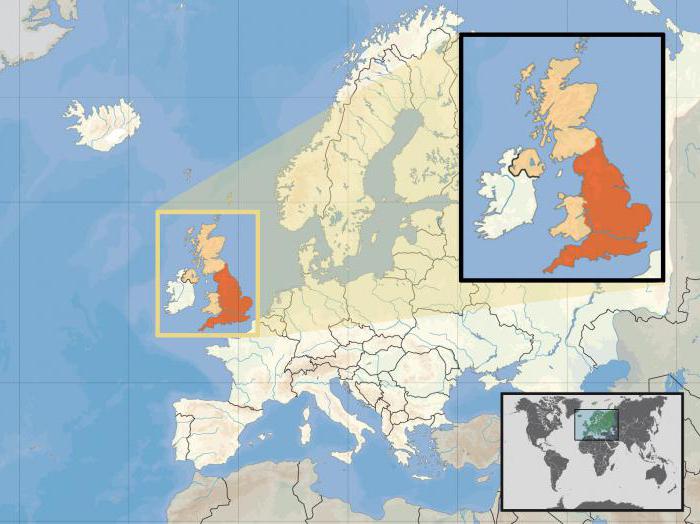Subregions of foreign Asia. Economic and geographical characteristics
Asia is, perhaps, the most variegated and many-facedpart of the world. Stunning diversity of landscapes and natural and climatic conditions, diverse peoples, religions and cultures, different ways of life. Sometimes even the neighboring countries of Asia are very unlike each other. Which subregions are allocated in foreign Asia? What states do they have and what are they special about?
Geography of foreign Asia. Brief description of the macroregion
Overseas Asia is the largest region of the planet, inwhich is home to about 80% of the world's population. It is interesting that the primacy in terms of the number of inhabitants in the world it preserves throughout the entire period of the existence of human civilization. In terms of area, the region is second only to Africa.
Detailed, componentwise characteristicforeign Asia will be considered later. It should be noted right away that agriculture was born within this particular part of the world, it was here that many important scientific discoveries and inventions were made.
The very term "foreign Asia" was fixed in everyday life in Soviet times. Today it is actively used only in the countries of the post-Soviet space.

The countries of Asia are very different in their area. There are giant states (China and India), as well as very tiny countries (for example, Lebanon or Bahrain). The borders between Asian states often pass along well-defined natural boundaries.
Which subregions of foreign Asia are distinguished by modern geographers? Read about this in the next section of the article.
Subregions of foreign Asia: countries and features
As already mentioned above, Asia is extremelyheterogeneous part of the world. Based on cultural, historical, and geographical features, the following subregions of foreign Asia are distinguished: South-West, South, South-East, Central (or Middle), and Eastern Asia.

South-West Asia includes 20 states, this is:
- Turkey.
- Armenia.
- Georgia.
- Azerbaijan.
- Cyprus.
- Saudi Arabia.
- Israel.
- Lebanon.
- Jordan.
- Palestine (territory with uncertain status).
- Iraq.
- Iran.
- Kuwait.
- Syria.
- Qatar.
- Bahrain.
- United Arab Emirates.
- Oman.
- Yemen.
- Afghanistan.
The economics of many of these countries is hopping for productionand the export of oil and oil products to the world market. In some countries of South-West Asia, other branches of the economy are also well developed (for example, tourism in the UAE).
South Asia is a subregion that includes only seven countries. These include:
- India.
- Pakistan.
- Nepal.
- Butane.
- Bangladesh.
- Sri Lanka.
- Maldives.
The main specialization of most of thesestates - agriculture. Thus, Azerbaijan is a major supplier to the world cotton market, Sri Lanka - tea, etc. In India, heavy industry and science are well developed.
South-East Asia includes 11 countries, such as:
- Myanmar.
- Laos.
- Vietnam.
- Thailand.
- Cambodia.
- Malaysia.
- Brunei.
- Indonesia.
- Singapore.
- Philippines.
- East Timor.
Plantations of sugar cane, rubber, tea and coffee are a typical landscape of this subregion. Of great importance for the economy of these states is the sea transport, which is very developed here.
East Asia is Asia's largest subregion. It consists of the following countries:
- China.
- Mongolia.
- Japan.
- Korea (South).
- North Korea.
Finally, the sub-region of Central Asia consists of five former republics of the USSR:
- Kazakhstan.
- Uzbekistan.
- Kyrgyzstan.
- Turkmenistan.
- Tajikistan.
After the collapse of the empire, these countries inherited advanced engineering, chemical and other industries.
It should be noted that the division into these subregionsforeign Asia in the domestic geographical literature is generally accepted. The demographic, religious and some other aspects (characteristics) of these subregions will be discussed later.
Features of population reproduction in different subregions of Asia
Foreign Asia was and remains the main focus of the demographic explosion on our planet. Although the rate of natural growth here in the past two decades has significantly decreased.

The largest natural increase in populationis typical for South-West Asia. Here its indicators are more than twice as large as the global ones. For example, in Iraq, one woman produces an average of four children, in Yemen - five, and in Afghanistan - seven. Significantly declined fertility in East Asia, particularly in China, where in recent decades, successfully implemented the demographic policy. Japan is also close to zero natural increase.
Features of the religious composition of the population of foreign Asia
It was within Asia that all three worldsreligion. This is Islam, Christianity and Buddhism. Muslims profess about 800 million inhabitants of foreign Asia. In many countries of the region this religion is dominant and fixed at the state level. Especially it concerns the countries of South-West Asia. It is here, on the territory of Saudi Arabia, the main shrine of all Muslims is located - the city of Mecca.
Buddhists in foreign Asia are less thanMuslims - about 550 million people. Christianity in the region is weak and limited. There are only two states where the majority of the population treats themselves as Christians - these are Cyprus and the Philippines.

Various national and regional religions have spread widely in Asia. To such, above all, include Confucianism, Hinduism, Shintoism, Sikhism.
Conflicts and hot spots within foreign Asia
Unfortunately, the territory of foreign Asia is covereda fairly dense network of military conflicts and hot spots. On the territory of Syria and Iraq, the so-called "Islamic State" (IGIL), the largest terrorist organization of the modern world, has been formed. The sphere of its criminal activities has long gone beyond the framework of the Arab world, and the whole of Asia.
For more than half a century, the conflict betweenIsrael and Palestine. The problem of Kurdistan - an integral ethnic region that has historically been "torn" between several modern states remains unresolved. The tiny island of Cyprus, in fact, is divided into two parts - Greek (recognized by the world community) and Turkish (not recognized by almost anyone).

Many other hot and potentially dangerous pointsscattered throughout the rest of overseas Asia. These are Kashmir, Sri Lanka, East Timor, Southern Philippines, Taiwan and other territories. An alarming and tense situation remains on the border between North and South Korea.
Finally…
Now you know which subregions existforeign Asia. These are the South-West, South, South-East, Central (Middle) and East Asia. The latter is the leader in terms of both area and population in Asia. But in terms of the number of states, the subregion of South-West Asia is leading.
</ p>




